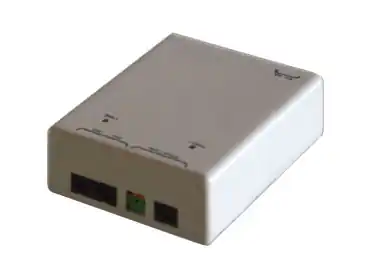In the realm of digital communication, the Network Termination Unit (NTU) stands as a pivotal bridge between customer premises equipment (CPE) and the broader Integrated Services Digital Network (ISDN). Though ISDN’s prominence has waned in developed countries, supplanted by advanced technologies like fiber optics and broadband internet, understanding NTUs offers invaluable insights into the evolution of digital networking.
This article delves into the architecture, operation, and historical significance of NTUs. By exploring their legacy, we not only pay homage to a foundational technology but also glean lessons applicable to modern networking paradigms.
In this article:
- What is a Network Termination Unit?
- How It Works
- Basic Rate ISDN U Interfaces vs. Basic Rate ISDN S/T Interfaces
- References

1. What is a Network Termination Unit?
A Network Termination Unit is a device for connecting digital Integrated Services Digital Network (ISDN) customer premises equipment to ISDN lines. The Network Termination Unit (NTU) allows customer premises equipment to be connected to the switching equipment at the telco’s central office (CO).
The NTU is a critical device in the architecture of Integrated Services Digital Network (ISDN) systems. Serving as the demarcation point between the public switched telephone network (PSTN) and the customer’s premises equipment (CPE), NTUs facilitate digital communication by converting network signals into a format that can be understood and processed by customer equipment. In essence, NTUs enable the seamless flow of digital data over traditional telephone infrastructure, marking a significant leap forward from analog to digital communication.
2. How It Works
Digital ISDN customer premises equipment such as routers and ISDN phones usually have an ISDN S/T interface, while the ISDN termination at the customer end of the local loop usually has a U interface using an RJ-45 connector. The NTU converts the U termination of the ISDN line to one or more standard coding S/T interfaces that are suitable for connecting digital ISDN-ready phones, routers, and other devices to an ISDN line. NTUs work differently than ISDN terminal adapters, which allow you to connect analog telephones, faxes, and similar equipment to your ISDN line. NTUs typically support either point-to-point or multipoint connections over distances of up to 5.4 kilometers on 26 AWG copper twisted-pair cabling.
Built-in U interface
Some newer ISDN-enabled devices have a built-in U interface, making an NTU unnecessary. The following table shows the differences between the Basic Rate ISDN U and S/T interfaces.
3. Basic Rate ISDN U Interfaces vs. Basic Rate ISDN S/T Interfaces
| Property | U Interface | S/T Interface |
| Number of wires | 2 | 4 |
| Connector | RJ-45 | RJ-45 |
| Zero-to-peak voltage | 2.5 V | 0.75 V |
| Line coding | 2B1Q (or 4B3T in Europe) | ASI (Alternate Space Inversion) |